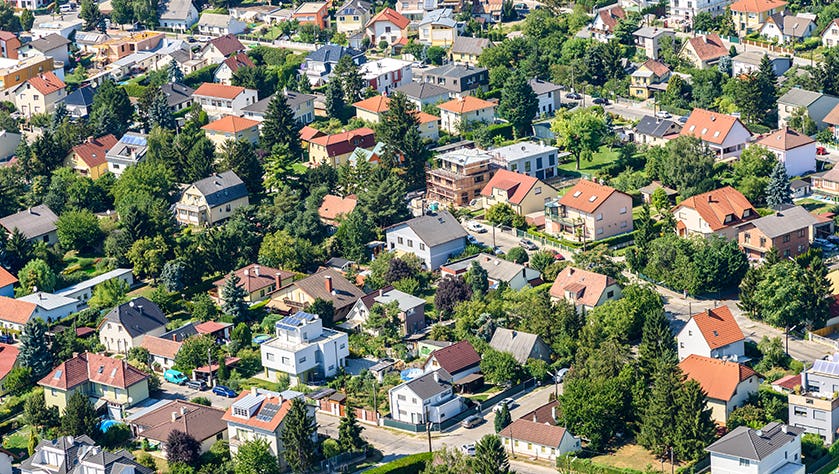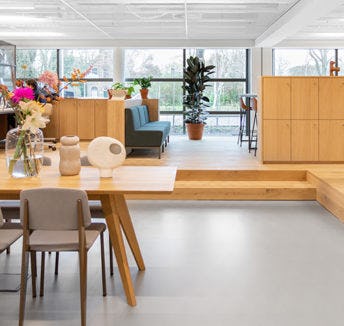
As hybrid working frees people from the constraints of city life, towns and villages will undergo a transformation that will reduce commuting and have a positive impact on the environment.
During the Great Smog of 1952, more than 4,000 Londoners died in four weeks. It was one of the reasons why millions left the city and moved to the suburbs. That trend continued through the 1960s and 1970s. Similarly, New York experienced smog in the 1950s and 1960s and its population dropped by one million in the 1970s. The suburbs were cleaner and safer.
That trend reversed during the 80s and 90s. Not only were cities like London affordable, but also provided young people with work and opportunity. If you wanted to get ahead, you moved to the city.
But as urban populations grew and the cost of living increased, so did working in and commuting to cities, leading to pollution and more stressed people.
We’re now experiencing another shift in the relationship between the big cities and the suburbs.
From urban to suburban
In 2022 and beyond, many modern professionals will no longer be obligated to attend a central office on a daily basis, thanks to the mainstream adoption of hybrid working, which means they can base themselves from home, a coworking space – visiting an urban HQ from time to time.
This will not only enable them to move out of cities to better-value areas in terms of housing (or spend more time in suburban communities) but also motivate companies to invest in local coworking spaces that are more convenient and less costly than expansive HQs at premium city addresses.
As the traditional exodus of people (especially younger people) from towns and villages to the city reverses, the result will be an unparalleled wave of suburban revitalisation in countries all around the world.
“With hundreds more rural and suburban flexible working locations set to open in the coming years, we expect a wide range of vibrant local communities to develop with thriving businesses at their heart,” says Mark Dixon, CEO and Founder of Regus parent company IWG. “People want to work close to where they live, so this is a trend that’s going to stick.”
New suburban Spaces
One indication of this change comes in the shape of Spaces opening new locations in suburbs around the world, and that trend will continue throughout 2022.
For example, Ealing has experienced a regeneration renaissance and Spaces Aurora is ideally positioned to capitalise on the anticipated boom across the London Borough of Ealing with the opening of Crossrail in summer 2022.
Spaces Williamsburg is located in New York’s ‘Little Berlin,’ in a renovated garment house, enhanced with designer furniture. Condé Nast Traveler described Williamsburg as “Hip, but slower-paced than many parts of Manhattan… The bustle of the city melts away, but the freshness and creativity stays.”
Meanwhile, Spaces Surry Hills in Sydney is a vibrant workspace in the sought-after Flinders Street precinct. This area is home to some of Australia’s leading start-ups and established companies in marketing, advertising, design and architecture.
Environmental and social impact
There are clear advantages to these trends in terms of greater wellbeing, productivity and the environment. Suburban revitalisation, along with the reduced need to commute afforded by the hybrid model, means significantly lower carbon emissions.
The amount of time saved is also considerable. In 2019, the average daily commute in the UK was 59 minutes, according to research by trade union body the TUC. In the US, before the pandemic there had been a 45% rise in ‘super commutes’ of 90 minutes or more each way between 2010 and 2019, according to a report in the New York Times.
And the time taken on these journeys wasn’t always due to distance from the office – in many cases, traffic congestion or insufficient public transport were a factor. In 2019, Americans lost an average of 99 hours sitting in congestion, according to research company Inrix.
The benefits of the part-time commute are obvious. Think of having an extra half hour in bed, then sitting down at a home desk or strolling to a nearby flexspace.
The rise of the 15-Minute City
Empowering people to work close to where they live in the suburb also paves the way for the development of the ‘15-Minute City’, where all local amenities such as shops, schools, restaurants and workspaces can be reached within 15 minutes on foot, by bicycle or via another non-polluting form of transport.
As Dixon concludes: “Work/life balance will improve, making people more productive and healthier. And with travel reduced, carbon emissions will fall. Meanwhile, investment will flood in for new infrastructure and facilities. This will be one of the most dramatic and long-lasting legacies of the pandemic.”
Suburban revitalisation and part-time commutes are among ten trends identified in IWG’s white paper, The Future of Work: a trends forecast for 2022.
With new locations in the heart of communities all over the world, find out how Spaces can help your business thrive in the new, hybrid world of work.
Enjoy this? You might also like these Spaces magazine stories:
Share this article
 Read now The trends shaping work in 2022: workforce dispersion
Read now The trends shaping work in 2022: workforce dispersion
 Read now The trends shaping work in 2022: experience design
Read now The trends shaping work in 2022: experience design